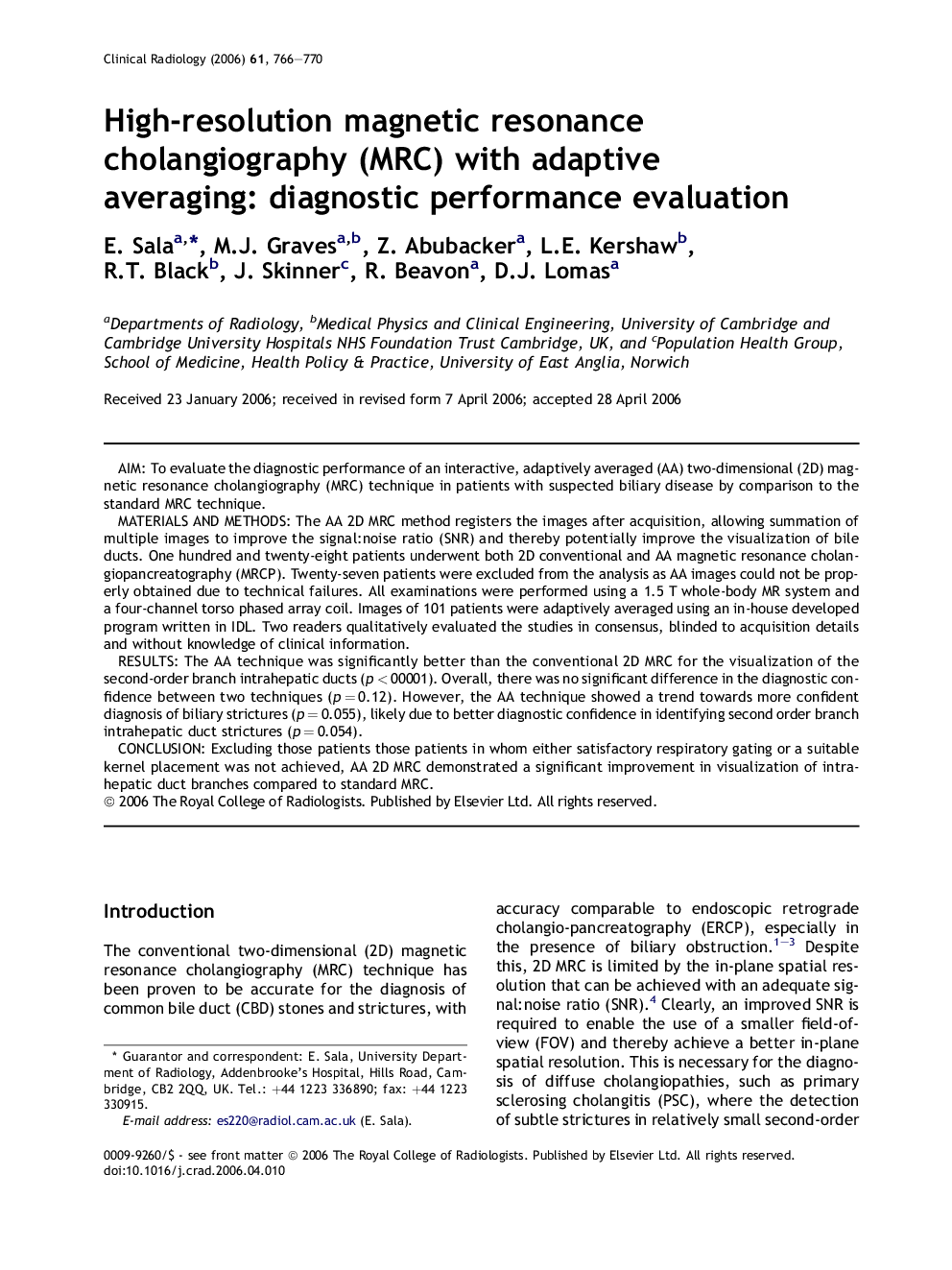| Article ID | Journal | Published Year | Pages | File Type |
|---|---|---|---|---|
| 3983653 | Clinical Radiology | 2006 | 5 Pages |
AimTo evaluate the diagnostic performance of an interactive, adaptively averaged (AA) two-dimensional (2D) magnetic resonance cholangiography (MRC) technique in patients with suspected biliary disease by comparison to the standard MRC technique.Materials and methodsThe AA 2D MRC method registers the images after acquisition, allowing summation of multiple images to improve the signal:noise ratio (SNR) and thereby potentially improve the visualization of bile ducts. One hundred and twenty-eight patients underwent both 2D conventional and AA magnetic resonance cholangiopancreatography (MRCP). Twenty-seven patients were excluded from the analysis as AA images could not be properly obtained due to technical failures. All examinations were performed using a 1.5 T whole-body MR system and a four-channel torso phased array coil. Images of 101 patients were adaptively averaged using an in-house developed program written in IDL. Two readers qualitatively evaluated the studies in consensus, blinded to acquisition details and without knowledge of clinical information.ResultsThe AA technique was significantly better than the conventional 2D MRC for the visualization of the second-order branch intrahepatic ducts (p < 00001). Overall, there was no significant difference in the diagnostic confidence between two techniques (p = 0.12). However, the AA technique showed a trend towards more confident diagnosis of biliary strictures (p = 0.055), likely due to better diagnostic confidence in identifying second order branch intrahepatic duct strictures (p = 0.054).ConclusionExcluding those patients those patients in whom either satisfactory respiratory gating or a suitable kernel placement was not achieved, AA 2D MRC demonstrated a significant improvement in visualization of intrahepatic duct branches compared to standard MRC.
